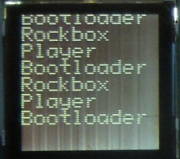Jonas “rasher” Häggqvist is the main man behind behind a distributed effort to gather a huge set of data on Rockbox builds of the past. Currently there are a number of build servers running “out there” providing info back to the master server about the bin size and ram size used by Rockbox builds (for a limited set of selected targets) of basically every single SVN revision since the dawn of time… Or more specifically almost 20000 revisions with rev 1 committed on January 17th 2002 (although the first files with contents were committed in r4, March 25th that year).
The repository was originally using CVS but was converted to SVN using cvs2svn in January 2007.
While this extensive work isn’t finished yet, you can already see the results appearing on Jonas’ site at:




